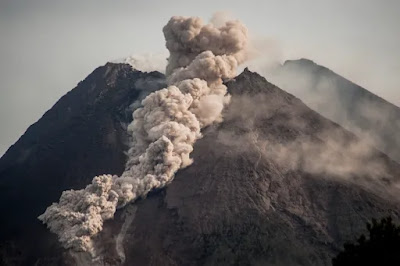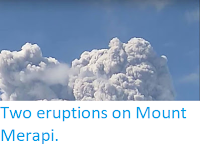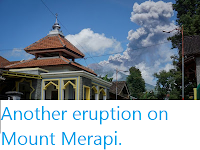Mount Merapi, a 2970 m stratovolcano (cone-shaped volcano made up of layers of ash and lava) in Central Java, considered to be one of Indonesia's most active, erupted on Wednesday 27 January 2021, producing a column of ash 3000 m high away, as well as several new lava streams and pyroclastic flows (avalanches of hot ash and gas). There are no reports of any casualties associated with this eruption, and nor would they be expected, as a 3 km exclusion zone has been in place around the volcano since the current eruption cycle began in November 2020, although a number of elderly people have been evacuated from nearby communities by the Badan Nasional Penanggulangan Bencana.
A pyroclastic flow on Mount Merapi on 27 January 2021. Agung Supriyanto/AFP. Mount Merapi lies in a densely populated area of Java, on the borders of
Central Java and Yogyakarta Provinces, only 28 km to the north of
Yogyakarta city. It has been erupting more-or-less continuously since
1548, and has been responsible for numerous fatalities, most recently in
1994 when a pyroclastic flow (avalanche of hot gas and ash) killed 27
people, mostly in the town of Muntilan, to the west of the volcano.
Since then Merapi has undergone tow major eruptive episodes, in 2006 and
2010, without any further loss of life, largely due to prompt
evacuations by Indonesian authorities.

The Indo-Australian Plate, which underlies the Indian Ocean to the south
of Java, is being subducted beneath the Sunda Plate, a breakaway part
of the Eurasian Plate which underlies Java and neighbouring Sumatra,
along the Sunda Trench, passing under Java, where friction between the
two plates can cause Earthquakes. As the Indo-Australian Plate sinks
further into the Earth it is partially melted and some of the melted
material rises through the overlying Sunda Plate as magma, fuelling the
volcanoes of Java and Sumatra.
See also...



Follow Sciency Thoughts on Facebook.
Follow Sciency Thoughts on Twitter.









